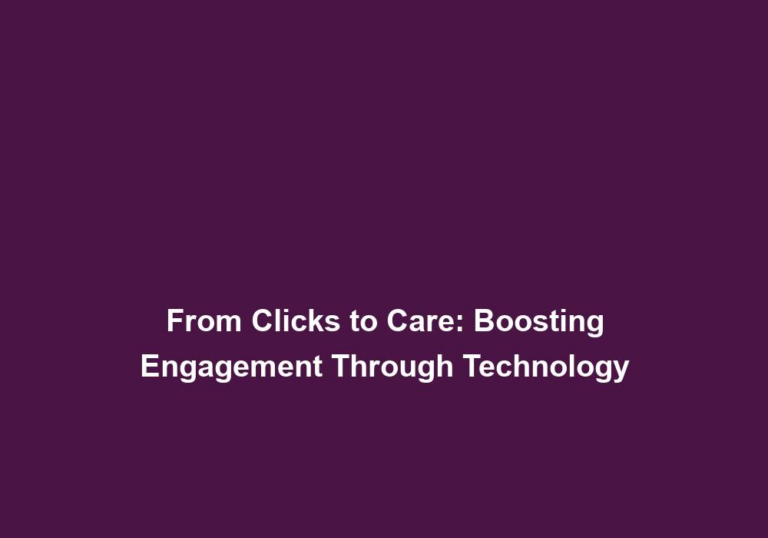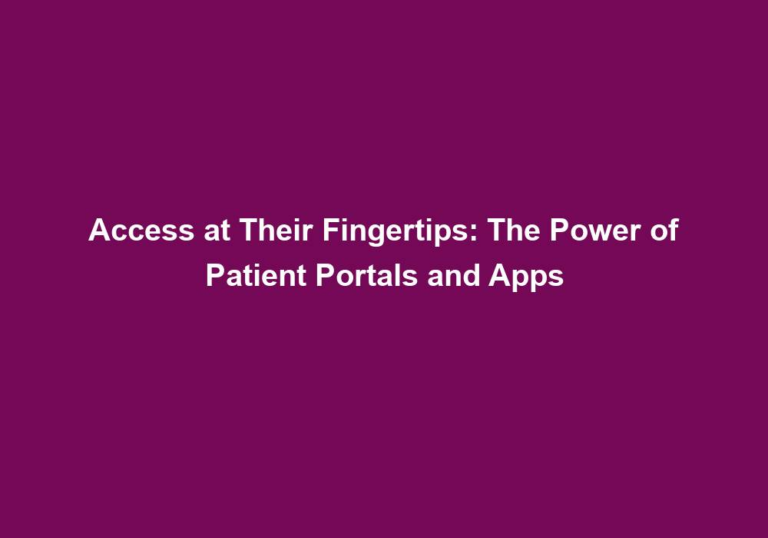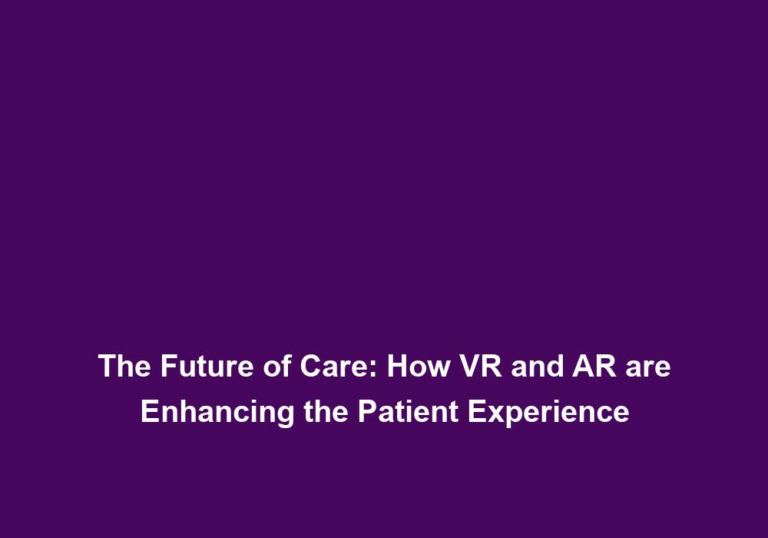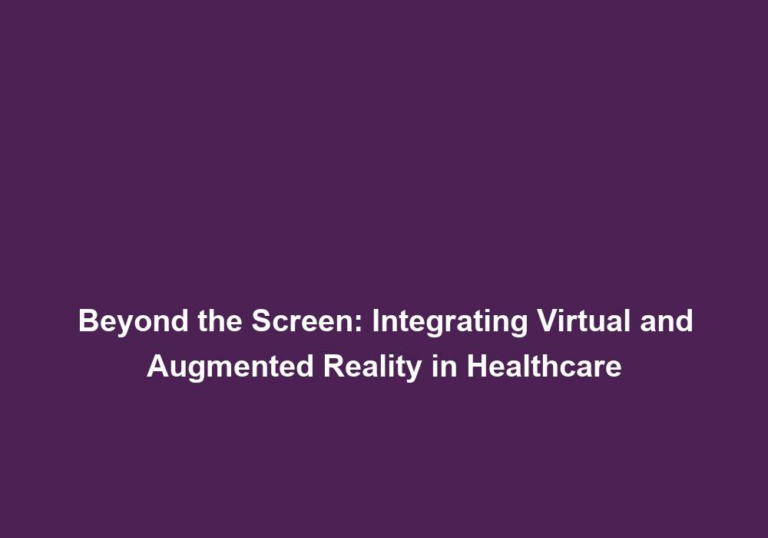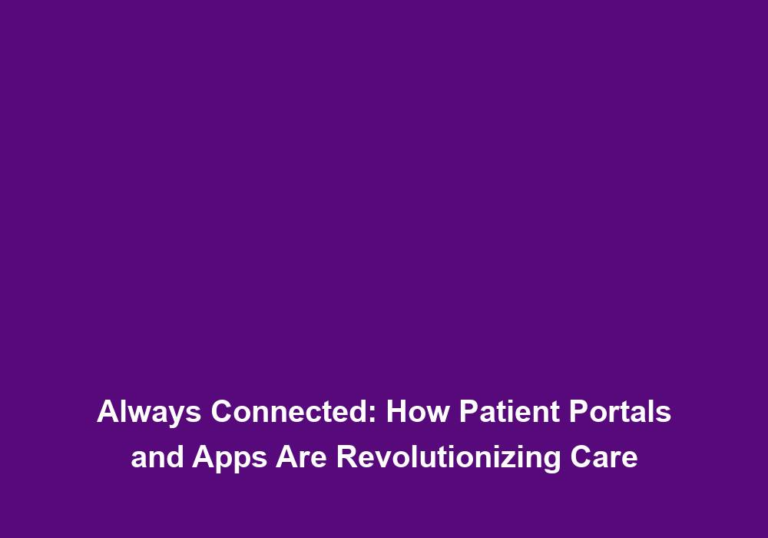Immersive Healing: The Role of VR and AR in Patient Engagement
In recent years, the healthcare industry has witnessed a remarkable transformation with the integration of Virtual Reality (VR) and Augmented Reality (AR) technologies. These immersive technologies have proven to be invaluable tools in patient engagement, revolutionizing the way healthcare professionals deliver care and enhancing the overall healing experience for patients. In this article, we will explore the significant role that VR and AR play in patient engagement and how they contribute to immersive healing.
Understanding VR and AR
Before delving into the topic, let’s briefly delve into the definitions of Virtual Reality (VR) and Augmented Reality (AR).
- Virtual Reality (VR): VR refers to a simulated experience that can be similar to or completely different from the real world. By wearing a VR headset, users are transported to a virtual environment where they can interact and engage with computer-generated surroundings.
- Augmented Reality (AR): On the other hand, AR overlays digital information onto the real world, enhancing the user’s perception of their environment. Instead of being fully immersed in a separate virtual world, users experience a blend of both real and virtual elements.
Enhancing Patient Engagement
Patient engagement is a critical aspect of healthcare, as it empowers patients to actively participate in their own care, leading to improved health outcomes. VR and AR technologies provide unique opportunities to engage patients on a deeper level, fostering a sense of empowerment and involvement in their treatment journey. Here’s how VR and AR contribute to patient engagement:
1. Distraction Therapy and Pain Management
VR and AR have proven to be effective tools in distracting patients from pain and discomfort. By immersing patients in a visually appealing and interactive virtual environment, these technologies divert their attention away from the medical procedures or chronic pain they may be experiencing.
- Distraction Therapy: Studies have shown that distraction therapy through VR and AR can significantly reduce pain perception, anxiety, and the need for pain medication. Patients can be transported to calming and soothing virtual environments, such as a peaceful beach or a serene garden, which helps alleviate anxiety and stress during medical procedures.
- Pain Management: VR and AR can also be used in pain management by providing patients with interactive distractions. For example, patients undergoing painful procedures can use VR headsets to engage in virtual games or activities that divert their focus from the pain, reducing the need for additional pain medication.
2. Rehabilitation and Physical Therapy
Incorporating VR and AR into rehabilitation and physical therapy programs can make the process more engaging and motivating for patients. Traditional therapy sessions can often be repetitive and mundane, leading to reduced patient compliance. By utilizing VR and AR, therapists can create immersive and interactive exercises that mimic real-life scenarios.
- Engaging Exercises: Immersive exercises allow patients to actively participate and interact with virtual environments, making the therapy sessions more enjoyable and motivating. For example, a patient recovering from a stroke can use VR technology to simulate daily activities like cooking or gardening, which helps improve their motor skills and overall rehabilitation process.
- Real-time Feedback: VR and AR can provide real-time feedback to patients during their therapy sessions. For instance, a patient undergoing physical therapy for balance and coordination can use VR technology to see their movements and body alignment in real-time, helping them make necessary adjustments and improve their technique.
3. Anxiety and Stress Reduction
Hospital visits and medical procedures can be anxiety-inducing for many patients. VR and AR can help alleviate this anxiety by providing patients with relaxing and calming virtual environments.
- Calming Environments: Through VR and AR, patients can be transported to serene and peaceful virtual environments, such as a tranquil beach or a lush forest. These immersive experiences help distract patients from their fears and anxieties, promoting a sense of tranquility and overall well-being.
- Guided Meditation: VR and AR can also be used for guided meditation and mindfulness exercises. Patients can access virtual meditation sessions that provide visual and auditory cues to help them relax and reduce stress. This can be especially beneficial for patients with anxiety disorders or those undergoing high-stress medical procedures.
4. Education and Empowerment
VR and AR can revolutionize patient education by offering immersive and interactive learning experiences. Medical information can be overwhelming, but through these technologies, complex concepts can be simplified and visually represented.
- Interactive Learning: With VR and AR, patients can explore interactive models of their own anatomy, visualize treatment options, and better understand their conditions. For example, a patient with a heart condition can use VR to explore a 3D model of their heart, allowing them to understand the location and function of different structures.
- Informed Decision Making: This enhanced understanding empowers patients to make informed decisions about their healthcare, leading to increased compliance and better health outcomes. By experiencing virtual simulations of different treatment options, patients can weigh the pros and cons and actively participate in their treatment planning.
5. Virtual Support Groups
Living with a chronic illness can be isolating and emotionally challenging. VR and AR have the potential to connect patients in virtual support groups, allowing them to share experiences, provide emotional support, and foster a sense of community.
- Emotional Support: Virtual support groups provide a platform for patients to connect with others who are going through similar experiences. This can significantly improve patients’ mental well-being and provide a sense of belonging and understanding.
- Mutual Encouragement: VR and AR can facilitate interactive activities within virtual support groups, such as virtual games or shared virtual experiences. These activities promote mutual encouragement and help patients build relationships and support networks.
The Future of Immersive Healing
As technology continues to advance, the possibilities for VR and AR in healthcare are endless. Here are some exciting areas where these technologies are making significant advancements:
1. Surgical Training and Planning
VR and AR are transforming surgical training by providing realistic simulations for surgeons to practice complex procedures. Surgeons can rehearse surgeries in a risk-free virtual environment, enhancing their skills and reducing the chances of errors during actual operations.
- Realistic Simulations: By using VR and AR, surgeons can immerse themselves in virtual operating rooms and practice surgical techniques with haptic feedback. This allows them to gain valuable experience and improve their surgical precision.
- Surgical Planning: Furthermore, these technologies enable surgeons to plan surgeries with greater precision by overlaying diagnostic images onto the patient’s anatomy. This helps surgeons visualize the patient’s unique anatomy and plan the surgery more effectively.
2. Mental Health Treatment
Virtual environments can be tailored to address various mental health conditions such as phobias, anxiety disorders, and post-traumatic stress disorder (PTSD). By exposing patients to controlled and immersive scenarios, therapists can guide them through gradual exposure therapy, helping them overcome their fears and anxieties.
- Exposure Therapy: VR and AR can create virtual scenarios that replicate the patient’s specific fears or triggers, allowing them to confront and gradually overcome their anxieties in a controlled environment. This can be especially effective for patients with phobias or PTSD.
- Real-time Monitoring: Therapists can monitor the patient’s reactions and responses in real-time during exposure therapy sessions using VR and AR. This provides valuable data for assessing progress and adapting treatment plans accordingly.
3. Telemedicine and Remote Care
The integration of VR and AR in telemedicine opens up avenues for remote patient care and consultations. Patients can virtually visit healthcare professionals without leaving their homes, reducing travel time and expenses.
- Remote Consultations: VR and AR can facilitate real-time interactions between doctors and patients, allowing for accurate diagnoses, monitoring, and guidance through at-home exercises or treatments.
- Home Healthcare: VR and AR can also assist caregivers and family members in providing remote care and assistance to patients. For example, a caregiver can use AR to guide a patient through medication management or assist in performing daily tasks.
Conclusion
The integration of VR and AR technologies into healthcare has transformed patient engagement and the healing experience. From distraction therapy and pain management to rehabilitation and mental health treatment, these immersive technologies have demonstrated their efficacy in enhancing patient outcomes. As technology continues to evolve, the future of immersive healing holds promising potential for revolutionizing various aspects of healthcare, ultimately leading to improved patient care and well-being.


